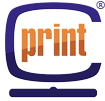Supporting Deaf and Hard-of-Hearing Undergraduate Students in STEM Field Settings with Remote Speech-to-Text Services
National Science Foundation, Human Resource Division, Research in Disabilities Education
This project addresses the challenges faced by deaf, hard-of-hearing, and low vision college students who participate in field trips for science, technology, engineering, or math (STEM) classes. We are developing an application for C-Print using smartphones (i.e., BlackBerry or Sidekick). This application will allow the instructor or leader of the field trip to communicate via cell phone with a service provider who is in a remote location (i.e., not on the field trip). The service provider produces captioning from the spoken information received on the phone and the student reads the information on the smartphone.
- Creating software applications
- Developing procedures for remote captioning
- Conducting focus groups with deaf and hard-of-hearing students, deaf/low vision students, and with service providers
- Field trials with deaf and hard-of-hearing students and with deaf/low vision students
- Measuring service provider accuracy
- Assessing usability from perspective of service providers, students and instructors
